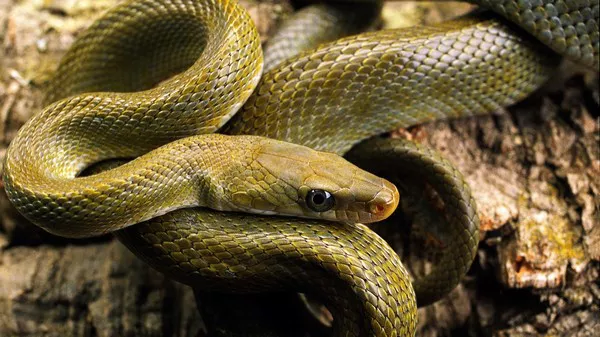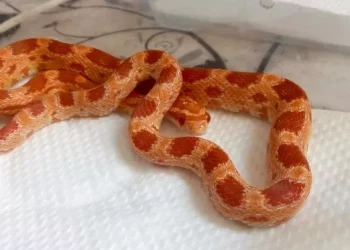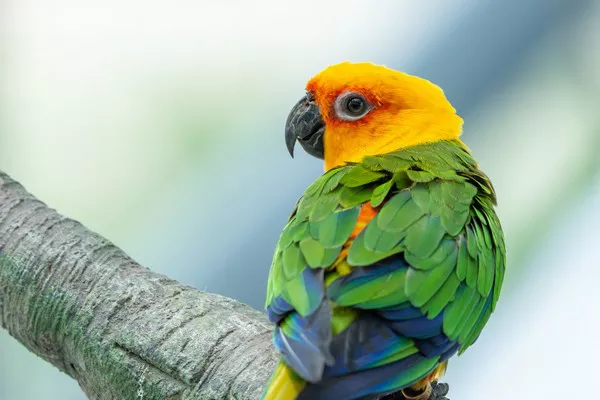Corn snakes (Pantherophis guttatus) are one of the most popular pet snakes due to their manageable size, docile nature, and vibrant coloration. When setting up a habitat for a corn snake, one of the most crucial aspects to consider is the choice of bedding. The right bedding not only contributes to the snake‘s comfort but also affects its health and well-being. In this comprehensive guide, we will explore the types of bedding suitable for corn snakes, the advantages and disadvantages of each, and other important considerations for their habitat.
Understanding Corn Snake Habitats
Before diving into specific bedding options, it’s essential to understand the natural habitat of corn snakes. Originating from the southeastern United States, corn snakes are often found in forests, fields, and abandoned buildings. They prefer environments that provide plenty of hiding spots and warmth, as they are ectothermic creatures relying on external heat sources to regulate their body temperature.
Temperature and Humidity Needs
Corn snakes thrive in temperatures ranging from 75°F to 85°F (24°C to 29°C) during the day, with a basking area that can reach 85°F to 90°F (29°C to 32°C). Humidity levels should be maintained between 40% and 60%. The choice of bedding can significantly impact these environmental conditions, making it vital to select appropriate materials.
Types of Bedding for Corn Snakes
When it comes to bedding for corn snakes, several options are available, each with its own benefits and drawbacks. Let’s explore the most common types of bedding materials used in corn snake enclosures.
Aspen Shavings
Aspen shavings are a popular choice for many snake keepers. Made from the wood of aspen trees, this bedding is highly absorbent and provides a natural look to the enclosure.
Advantages:
Absorbency: Aspen shavings effectively absorb moisture and odor, helping to maintain a clean habitat.
Comfort: The soft texture is comfortable for the snake to move around on and burrow into.
Low Dust: Unlike some other wood shavings, aspen is low in dust, which can be beneficial for respiratory health.
Disadvantages:
Humidity Control: While absorbent, aspen can sometimes dry out the enclosure too much, necessitating additional humidity sources.
Potential for Mites: There is a small risk of mites or pests being present in unprocessed aspen shavings, so sourcing from reputable suppliers is crucial.
Cypress Mulch
Cypress mulch is another natural bedding option made from shredded cypress wood. It is often used in humid environments.
Advantages:
Humidity Retention: Cypress mulch holds moisture well, helping to maintain humidity levels within the enclosure.
Natural Look: The dark color and texture provide a natural aesthetic that mimics a snake’s natural habitat.
Pest Resistant: Cypress has natural oils that can deter pests, making it a relatively safe choice.
Disadvantages:
Weight: Cypress mulch can be heavier than other bedding types, making it more difficult to clean or change.
Potential for Mold: If kept too moist, cypress mulch can develop mold, which poses health risks for your snake.
Coconut Fiber (Coir)
Coconut fiber, or coir, is derived from the husk of coconuts. This bedding is increasingly popular among reptile enthusiasts for its natural properties.
Advantages:
Excellent Humidity Control: Coconut fiber retains moisture well, making it an ideal choice for maintaining humidity levels.
Biodegradable: As a natural product, coconut fiber is environmentally friendly and decomposes without harmful effects.
Soft Texture: The fibrous texture is comfortable for snakes and allows for burrowing.
Disadvantages:
Dustiness: Some coconut fiber products can be dusty, which may affect respiratory health, especially if not properly cleaned or conditioned before use.
Cost: Coconut fiber can be more expensive than other bedding options, making it less accessible for some keepers.
Reptile Carpet
Reptile carpet is a synthetic bedding option designed specifically for reptiles. It is made from various materials, including nylon or polyester.
Advantages:
Easy to Clean: Reptile carpet can be washed and reused, making it a convenient option for busy snake owners.
No Ingestion Risk: Unlike organic substrates, there is no risk of your snake ingesting bedding materials, which can be a concern with loose substrates.
Non-Toxic: Most reptile carpets are made from safe, non-toxic materials, ensuring the health of your pet.
Disadvantages:
Lack of Natural Behavior: Reptile carpet does not provide the same opportunities for burrowing or natural behaviors as loose substrates do.
Moisture Retention: Reptile carpet can retain moisture, leading to potential mold growth if not monitored properly.
Paper Towels and Newsprint
Paper towels and newsprint are common substrate options for new snake owners or those who prefer easy cleanup.
Advantages:
Easy to Replace: These materials are inexpensive and easy to replace, allowing for quick clean-up after accidents.
Hygienic: Paper towels and newsprint are easy to sanitize, helping to maintain a clean environment for your corn snake.
No Dust: These substrates do not produce dust, reducing respiratory risks.
Disadvantages:
Lack of Aesthetic Appeal: Paper towels and newsprint do not provide a natural look and may be visually unappealing for some owners.
Limited Enrichment: These substrates do not allow for burrowing or other natural behaviors that snakes typically engage in.
Sand and Soil
Some owners use sand or soil as a substrate, particularly in naturalistic setups that aim to replicate the snake’s wild environment.
Advantages:
Natural Feel: Sand and soil can create a more natural habitat, allowing for burrowing and other instinctual behaviors.
Humidity Regulation: When mixed with other materials, soil can help maintain humidity levels in the enclosure.
Disadvantages:
Ingestion Risk: Snakes may accidentally ingest sand or soil, which can lead to gastrointestinal blockages.
Difficult to Clean: Sand and soil can be more challenging to clean compared to other substrates, requiring more maintenance.
Choosing the Right Bedding
When selecting bedding for your corn snake, several factors should be considered:
Snake Size and Age
The size and age of your corn snake can influence the choice of bedding. Juvenile snakes may require softer, more comfortable bedding that allows for easy movement and burrowing. Adult corn snakes may benefit from sturdier substrates that can withstand their weight and activity levels.
Habitat Design
Consider the overall design of the enclosure. If you are creating a naturalistic habitat with various hiding spots and climbing structures, certain substrates like cypress mulch or coconut fiber may complement the design better than reptile carpet.
Cleaning and Maintenance
Some bedding options require more maintenance than others. If you have a busy schedule, you may prefer easy-to-clean options like paper towels or reptile carpet. Conversely, if you enjoy engaging with your snake and maintaining a more natural environment, loose substrates like aspen shavings or coconut fiber may be more suitable.
See Also: What Wattage Heat Mat for Corn Snake?
Humidity Levels
Depending on your local climate and the specific humidity needs of your corn snake, you may need to choose bedding that helps regulate moisture levels. For example, coconut fiber or cypress mulch can be beneficial in maintaining humidity, while aspen shavings may require additional sources of moisture.
Maintaining a Healthy Environment
Regular Cleaning
Regardless of the bedding choice, regular cleaning is essential to maintain a healthy environment for your corn snake. Spot clean the enclosure daily by removing any waste, shed skin, or uneaten food. A thorough cleaning should be performed every 2-4 weeks, depending on the type of bedding used.
Monitoring Temperature and Humidity
Keep a close eye on the temperature and humidity levels within the enclosure. Use reliable thermometers and hygrometers to monitor conditions regularly. Adjust the heating and humidity sources as necessary to ensure a comfortable habitat for your snake.
Providing Hiding Spots
Corn snakes thrive in environments where they can hide and feel secure. Regardless of the bedding choice, ensure that the enclosure includes plenty of hiding spots, such as caves, logs, or plants, to help your snake feel safe.
Common Misconceptions About Bedding
“All Substrates Are the Same”
One common misconception is that all bedding options are equal. In reality, different substrates offer varying benefits and drawbacks. Choosing the right bedding can significantly impact your corn snake’s health and well-being.
“Loose Substrates Cause Impaction”
While it is true that some loose substrates can pose a risk of impaction if ingested, responsible feeding practices and careful observation can mitigate this risk. Offering appropriately sized prey and monitoring your snake’s behavior can help ensure their safety.
“Bedding Does Not Affect Behavior”
Bedding can significantly influence a snake’s behavior. Loose substrates encourage natural behaviors such as burrowing and exploring, while harder surfaces may limit these activities, leading to stress or boredom.
Conclusion
Choosing the right bedding for your corn snake is a vital aspect of creating a comfortable and healthy habitat. Whether you opt for natural substrates like aspen shavings and cypress mulch or more synthetic options like reptile carpet, understanding the specific needs of your snake will help you make an informed decision.
Related Topics:



























